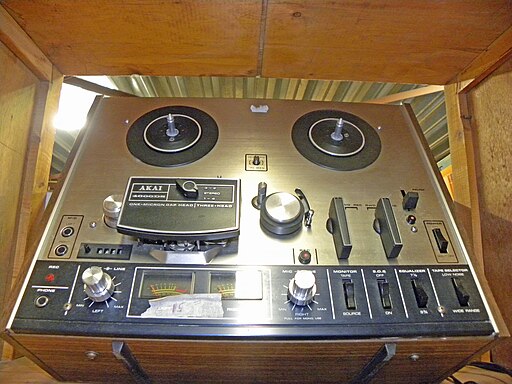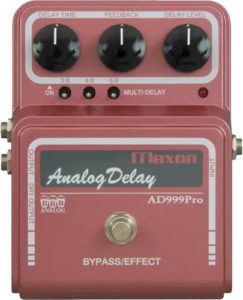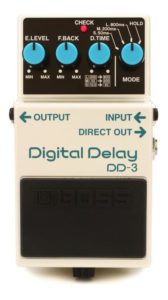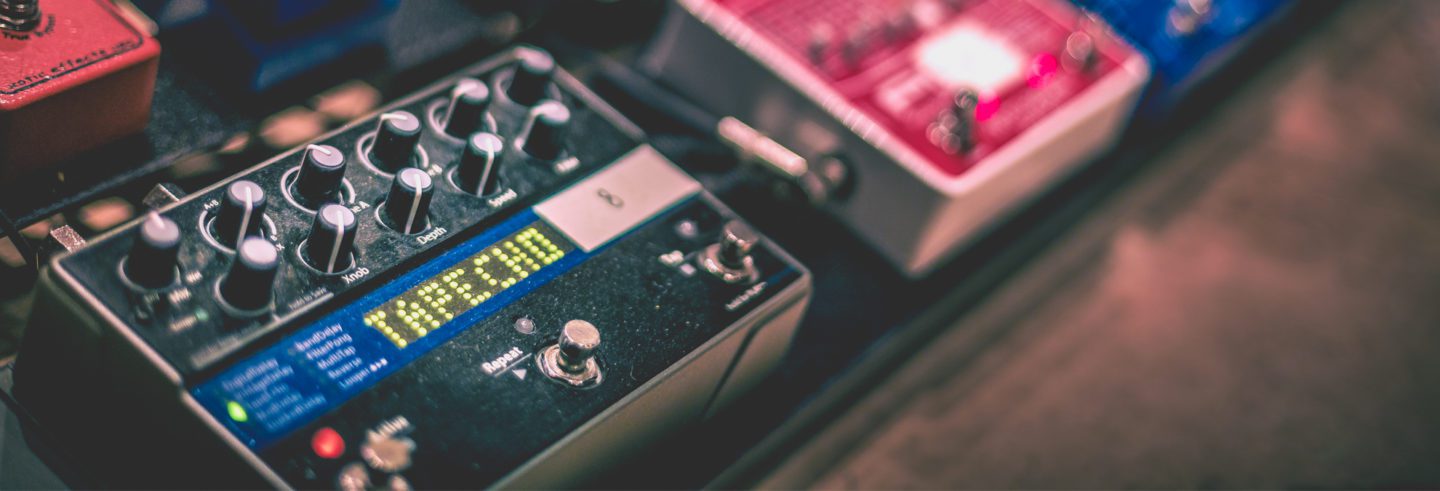Consumer Mentor is reader-supported. We may earn commission on sales through our links at no extra cost to you.
Delay pedals are one of the most popular guitar effects and have been used by many of the world’s most influential guitarists to create incredible layers of sound and intricate multi-guitar parts (even with just one guitarist in the band).
This effect is incredibly popular in almost every style of music—just about every pedal manufacturer makes at least one delay pedal, so finding the right kind of delay can be a bit tricky.
But have no fear, we’ll give you the rundown on what sorts of features you should look for in the right delay pedal, sort through some of the most popular types of delay pedals, and help you sort out exactly what you do and don’t need!
What Is a Delay Pedal?
A delay pedal is a time-based effect that takes an input signal, delays it by a set amount of time (and maybe applies an effect to it as well), and then plays that signal.
The idea of a delay effect is quite simple, but how the effect actually works, and the many creative ways that it can be used make it a vital tool for a wide variety of artists across just about every musical genre.
Types of Delay Pedals
There are three different methods for creating a delay pedal: tape, analog circuits, and digital circuits. Each one has its unique advantages and disadvantages.
Tape Delay


Over time, advancements in the tape machines brought features like multiple playback heads (allowing users to play more than one delay repetition), adjustable tape speed, and movable playback heads (which allowed the delay time to be easily adjusted).
As you can imagine, these machines were large and cumbersome, hard to adjust, and not easy to carry around. These issues led to a search for something a bit more user-friendly and suited to the rigors of live work.
Analog Delay


Despite this limitation, however, these analog delay pedals were revolutionary for thousands of guitarists. For a (relatively) small price, the power of thousands of dollars in tape delay equipment was available in a compact and rugged footprint.
Digital Delay


With the introduction of relatively inexpensive digital signal processors (DSP) in the early 1980’s, digital delay pedals were i
ntroduced—first as expensive rack-mounted units then (as the electronic components shrunk) as less-expensive and much smaller foot pedals.
In basic terms, digital delay pedals take a short recording of the incoming guitar signal, pass that recording to a storage buffer to hold onto the recording for a short time, and then play back the recording after a user-selected time delay.
The power of a digital delay is in the precise control that DSP chips give to the user. These pedals generally offer fine control over the delay time, wet/dry mix, delay feedback, and long delay times (over 2 seconds for many pedals).
In the early days of 8-bit digital delay pedals, sound degradation was a valid concern, but with today’s 16, 20, and 24-bit delay circuitry many players find the sound quality of digital delay pedals similar or identical to that of analog circuitry.
As in all things guitar-related, be sure to try these in person, and trust your ears—not marketing hype!
Delay Pedal Controls and Features
Depending on the sound that you want to get out of your delay pedal, you may want to look for some of the following controls and features.
Basic Delay Pedal Controls
For all the tonal variety you can get out of a delay pedal, there are really only three essential controls that every delay pedal must have.
Delay time
The principal delay control is the one that controls the specific delay time. Depending on the particular pedal, the actual time delay (measured in milliseconds) from fully counter-clockwise (shortest delay) to fully clockwise (longest delay) can vary quite a bit. Analog delays generally top out at around 600-800 milliseconds, while digital delays can have very long delay times. Typically, the shortest delay times are in the 5-20 milliseconds range.
Feedback
Also called regeneration or simply “regen,” this control changes the number of repeats. At a low setting, there will be only one repeat, and at a high setting, there can be quite a few repeats. Some pedals (mainly digital delays) will provide infinite repeats if this knob is maxed out. This feature can lead to some interesting sounds if you’re not careful!
Mix
Sometimes labeled FX level, this control will change the volume of the repeats. At the lowest setting, the effect isn’t audible at all. At maximum, the delay sounds are the same volume as the original sound.
Advanced Controls and Features
If you want to take your delay pedal use to the next level, or you want to go beyond a simple echo, here are some features and settings you should look for in your next delay pedal.
Tap tempo
This is one of the most popular features on delay pedals. If you want your delayed sound to be in time with a song and don’t have a drummer with perfect time (or one who doesn’t play with a click track) this feature is invaluable. While some pedals have a button for the tap tempo feature, others just include a 1/4-inch jack for you to supply your own foot switch. While this requires an additional pedal and cable, being able to relocate your tap tempo button can be very handy for crowded pedal boards.
Subdivision controls
These controls often go hand-in-hand with the tap tempo controls. This knob allows you to select a subdivision of the delay time (whether you input it by tapping or by turning a knob). So if you want the delay to be twice as fast as the song tempo, all you need to do is select the eighth note subdivision and tap the song’s tempo. This also makes it much easier to get a dotted-eighth delay without the need to do any fancy math or precision toe-tapping.
Modulation
Some of the better delay pedals (especially modeling delays) offer the ability to add a modulation to your delay sound. This is usually a chorus-like effect, but some pedals allow you to adjust the type and intensity of the modulation (in other pedals, the modulation is fixed or only slightly tweakable).
Multiple delays
A unique sound can be had by stacking multiple delay pedals in a single chain, and some pedals allow you to do this in a single unit! Generally, pedals with multiple delays feature 2 or 3 and allow them to be configured in series (with one delay pedal feeding the next) or in parallel (with each pedal getting the “clean” signal and then delaying it separately). These can be great fun and can lead to some very intricate quasi-loops.
Looper
Loopers are an incredibly in-depth pedal topic and generally cost a lot of money. If you want to dip your toe into looping without spending a fortune, though, some digital delay pedals feature limited (and I do mean limited) looping ability. Usually, these loopers have a very short loop time (30 seconds or less) and lack features that you can find on dedicated looping stations (the ability to store and recall loops, integrated drum machines, etc.) but they make a decent loop for practicing solos over a short chord progression or playing around with. If you need more, you can always upgrade to a real looper later!
Modeling
Many digital delays also include the ability to model older, classic delay pedal styles. While the selections vary, common modeling sounds are tape delay, multi-head tape delay, analog delay, low fidelity digital delays (like 8-bit), and lots more. Sometimes, the modeling selections can get even more out-there with selections such as reverse delay (hear your sound in reverse) and other useful settings such as modulation or stereo delays.
Delay display
Most delay pedals feature a simple knob to turn, with no real indication of how long the delay time is. If you’re looking for a consistent delay time that needs to be the exact same every time, though (for example, if you’re playing with a prerecorded track), then you may want something that allows you to set the delay time in milliseconds. This way you can be sure you’re getting the exact delay time that you need. Being able to see the delay time also lets you use a delay time calculator (like this one) to calculate precise note value delays for specific tempos if your pedal doesn’t have a tap tempo function.
Stereo output
Also called a ping-pong delay, pedals that have stereo outputs allow you to have “side to side” stereo effect with your delay so that the first delayed note will come from the right speaker, then the next from the left, and so on. Useful in the studio or live if you can separate your amplifiers.
Our Picks for the Top 3 Delay Pedals – Reviewed
1. MXR Carbon Copy Analog Delay


Ease of use, real analog circuitry, and a good price make this a great delay pedal for those that want a basic, high-quality sound!
Our score: 4/5
MXR is well-known for their Phase 90 pedal, but the Carbon Copy delay fills almost the exact same niche in the delay pedal realm. Easy-to-use, with a great sound, the limited options available in this pedal are actually more of a selling point than a drawback.
This pedal features the basic three-knob arrangement you’ll find on most delay pedals: “Delay” (time), “Regen” (repeats), and “Mix” (volume). Additionally, there is a small button at the top left that you can push for a modulation effect that gives a bit of tape delay-like warble. There are two internal pots to adjust the width and rate of the modulation sound, but it there isn’t much need since the effect is well-calibrated out of the box.
Since this is an analog delay pedal using the bucket brigade chips, this means that this pedal has certain analog quirks. Like most analog pedals, the maximum delay time is limited by the circuitry, and this one only goes to around 600 milliseconds. Additionally, this pedal (like many analog delays) can get a bit crazy if you turn up both the Delay and Regen controls. This is called “self-oscillation,” which is when the delay pedal actually feeds itself, leading to an out-of-control sound and a sometimes painful volume spike. Useful, but only if you mean to use it!
Since it’s analog, it also colors the sound (even without the modulation engaged) and makes it a bit darker and warmer—although some consider the sound too muddy. Also, note that since this pedal is true bypass, the delay “tails” will not carry over when the pedal is bypassed.
Features – All-analog circuitry with the standard, easy-to-use 3-knob layout. Mod button (with internal trim pots) allows a pseudo-tape echo. True bypass and powered by either a 9V battery or A/C adapter.
Pros – Easy to use, and sounds great. The warmer, analog delay sound is sought-after by many, and the price makes this an easy way to get a high-quality delay sound. True bypass.
Cons – Not as flexible as some delay pedals, especially if you want long delay times or lots of different delayed sounds. Mod controls are only adjustable inside the pedal. True bypass means no delay tails when the pedal is switched off.
2. TC Electronics FlashBack Delay Pedal


Lots of options and flexibility for a variety of high-quality delay sounds in a traditional-sized guitar pedal.
Our score: 4.5/5
TC Electronics is known for high-quality pedals, and their FlashBack line of digital delay pedals (yes, there’s more than one) is no exception to this rule!
The “middle” of the FlashBack line is the one we recommend since it’s got most of the options of the bigger Flashback X4 and is easier to change delay styles than the FlashBack Mini, it’s got the best of both worlds.
The Flashback features the standard 3-knob delay knobs (Delay, Feedback, and Level) along with an additional knob to set the type of delay. There are lots of delay options, from a clean digital delay to analog and tape delays, dynamic and stereo delays, reverse delay, a short (40-second) looper, and a single slot for a TonePrint delay. Additional control options include a 3-way switch to set the subdivision (with quarter notes, dotted-eighths, or both) and an “audio tapping” feature where you can hold down the bypass switch and strum your guitar to set the delay time. Unfortunately, there is no switch or input for a tap tempo pedal, but the audio tapping feature is pretty impressive (and works well, overall).
Since this is a digital delay, there’s plenty of delay time available—most delays have a max time of 7,000 milliseconds (7 seconds) and a minimum time of 20 ms. The only exception to this rule is the Slapback delay, which has a time of 20-300 ms.
All the different types of delay models sound good, with a definite difference in sound between each setting. The TonePrint feature adds (almost) unlimited flexibility to this pedal, with the ability to download specialized delay settings from popular artists directly into your pedal. You can either use them as-is or modify them using TC’s TonePrint Editor software. This software lets you adjust just about every parameter of the sound that you can think of! You can see some of the pre-made FlashBack TonePrints here.
Finally, if you like the sound of the FlashBack but you want to more flexibility, check out the FlashBack X4. All the same options, but three different delays you can recall with built-in footswitches, a dedicated tap tempo button, and 4 TonePrint slots in a larger pedal enclosure. If you want something smaller, the Flashback Mini allows you to preload a single delay type and use it as you would a regular analog delay pedal. If you really want something crazy, there’s also the Flashback Triple Delay which has all the same features of the FlashBack X4, but allows multiple delays to be run at the same time (either in series OR parallel) for some truly crazy and ethereal sounds.
Features – 9 high-quality delays, plus a looper and a TonePrint slot in a small package. Audio tapping for matching a song’s tempo. Selectable true or buffered bypass, stereo outputs. Runs on 9V battery or A/C adapter.
Pros – Lots of options in a tiny pedal, and the TonePrint ability covers just about any delay you (or anyone else) can think of! The entire FlashBack line of delay pedals also gives lots of options for those that want something bigger or smaller. Selectable bypass means you can have delay trails (buffered bypass) or uncolored sound (true bypass).
Cons – The larger FlashBack pedals can be challenging to fit on smaller pedal boards, and the audio tapping—although a good substitute for tap footswitch)—isn’t always as easy to use. First One
3. Eventide TimeFactor Twin Delay


Two delays, a looper, and just about any delay sound you can think of are possible from this pedal—this one is the choice of countless pro guitarists!
Our score: 4.5/5
Eventide is well known for creating great delay and reverb effects! One of their first products was a delay rack unit (although it was designed more for broadcasting than music), and they have been continuously pushing boundaries since then.
The Eventide TimeFactor contains just about all the advanced options and controls that you could want in a delay pedal. This pedal has two independent delays that can be used together or separately for some exciting and complex sounds. Each delay can be one of 9 types—from traditional digital and tape delay sounds to some band delay (delay followed by modulated filters, reverse delay, and multi-tap (10 delay taps with controls for diffusion and spacing). There’s also a 12-second looper that can be controlled via the footswitches.
You can set the delay time from 0 to 3,000 milliseconds, or you can sync it to a specific song’s tempo by using the tap tempo footswitch. Additionally, there’s also an LED display so you can more precisely set the delay time (either in milliseconds or beats per minute). You can also use the screen to set the specific tempo subdivision (whole notes, quarter notes, etc.).
The TimeFactor has two rows of controls, for lots of sound customizability. The top row contains your standard delay controls, but in addition to controlling the delay time and repeats for both delays, you can also mix between them and set the overall mix of delay and dry signal. The bottom row contains the knobs to control aspects of each delay (changing modulation wave shape, digital delay resolution, etc.) making for a wide variety of possible sounds (especially when you consider the dual delays). You don’t have to start out with knob twirling; however, the TimeFactor comes with 100 pre-programmed presets so you can get a taste of the unit right out of the box.
Other controls and features include the ability to plug in an expression pedal for real-time control, and you can also control functions via MIDI. This unit also features a USB input that allows you to plug the unit into a computer and update the firmware yourself—making the unit “futureproof.” There are even three user-selectable bypass options (DSP, true bypass, and DSP+FX) and the DSP+FX allows you to bypass the unit while still retaining the delay “tails.” All this (and lots more, really) in a very well built and sturdy housing that can withstand live use.
Features – 9 incredibly high-quality delays with sound and tempo controls for just about anything you can think of. Inputs for expression and MIDI control. Stereo outputs. Runs on (included) A/C adapter.
Pros – You can create just about any delay sound you want with this pedal. What more do you need?
Cons – Learning your way around the controls can be challenging, but that’s the price of such power. Not cheap, but this will likely be the last (and only) delay pedal you’ll ever need.
Conclusion
Whether you’re looking for a quick and subtle slapback or a lingering echo, a great delay pedal can add space and depth to even the most basic of guitar parts.
If you’re looking for more delay pedal options, we have them too. Check them out over here!

Leave a Reply